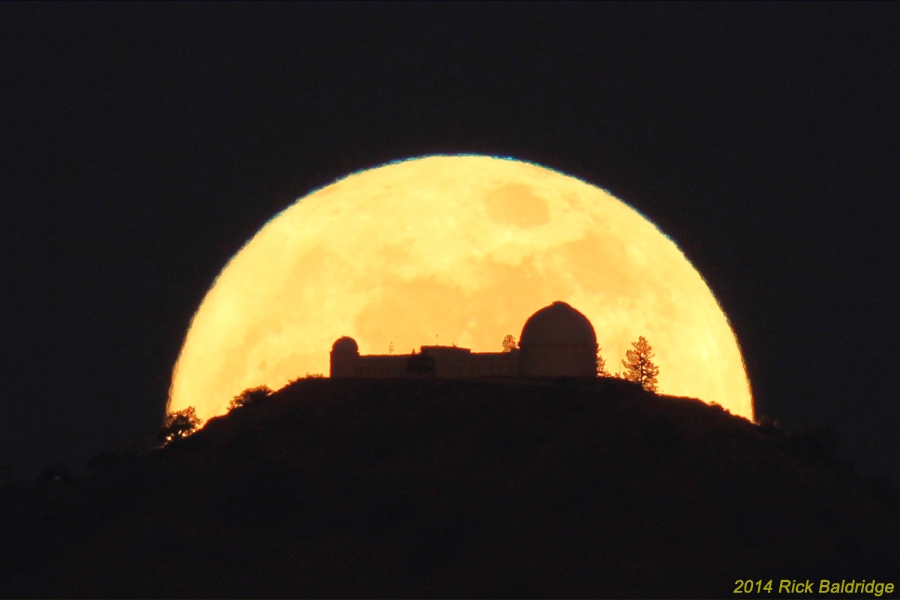http://apod.nasa.gov/apod/
Astronomy Picture of the Day
Each day a different image or photograph of our fascinating universe is
featured, along with a brief explanation written by a professional astronomer.
2014 January 18
Apogee's Full Moon
Image Credit &
Copyright:
Rick Baldridge
Explanation:
This big, bright, beautiful Full Moon rose over
Lick Observatory Wednesday night.
Traditionally a full moon in January might be called
the Wolf Moon.
But this moon reached its full phase on
January 16, 4:54 UT, within about 2 hours of apogee,
the most distant point in
its
elliptical orbit around planet Earth.
That also makes it the
smallest
full moon of 2014.
Of course the
difference in
apparent size between the largest and
smallest full moons is hard to see, because
the difference in distance between lunar apogee and perigee, or
closest point in the Moon's orbit, is only about 50,000 kilometers,
while the Moon's average distance is around 385,000 kilometers.
Though not by much,
this
apogee's full moon was also the smallest full moon
of the last 1,000 years.
It will keep
that distinction until a slightly smaller full moon occurs
close to apogee in 2154.

No hay comentarios:
Publicar un comentario